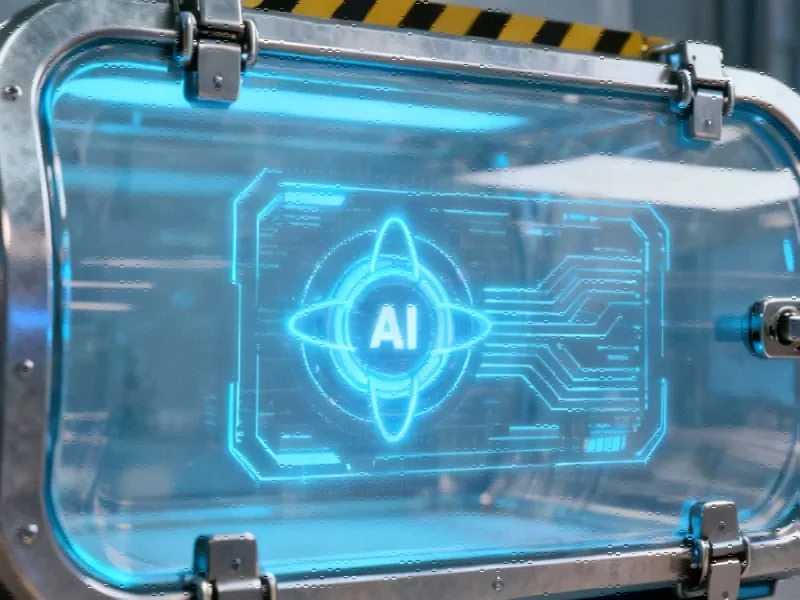The Evolving Data Security Landscape in Industrial Computing
Industrial organizations face an unprecedented data security challenge as digital transformation accelerates across manufacturing, energy, and critical infrastructure sectors. The convergence of operational technology (OT) and information technology (IT) networks, combined with the proliferation of IoT devices and cloud platforms, has created a vastly expanded attack surface that traditional security approaches cannot adequately protect.
Table of Contents
- The Evolving Data Security Landscape in Industrial Computing
- The Limitations of Traditional Data Security in Industrial Environments
- Context-Aware AI: A Paradigm Shift in Data Protection
- Protecting Industrial Data Across Hybrid Environments
- Securing Generative AI in Industrial Applications
- Streamlining Compliance in Regulated Industries
- Integration with Existing Security Infrastructure
- Continuous Protection in Dynamic Environments
- Implementation Considerations for Industrial Organizations
Legacy data protection methods that rely on pattern matching and static rules are proving increasingly inadequate against sophisticated threats. These conventional approaches typically detect less than 40% of sensitive data while generating overwhelming numbers of false positives that strain already limited security resources. As industrial organizations embrace Industry 4.0 technologies, they must fundamentally rethink their data protection strategies to address these evolving challenges.
The Limitations of Traditional Data Security in Industrial Environments
Traditional data security tools face particular challenges in industrial computing environments where data formats are diverse and context-dependent. Manufacturing specifications, process control parameters, intellectual property, and operational data don’t always fit neatly into predefined categories that pattern-based systems can recognize.
These systems struggle with the unique characteristics of industrial data, including:
- Proprietary file formats from industrial control systems and manufacturing equipment
- Context-sensitive operational data where the same value may have different sensitivity depending on its application
- Unstructured engineering data including CAD files, process diagrams, and technical specifications
- Real-time operational data streaming from sensors and control systems
Context-Aware AI: A Paradigm Shift in Data Protection
Modern data security governance platforms leveraging context-aware artificial intelligence represent a fundamental shift from rule-based to intelligence-driven protection. Unlike traditional methods that examine data in isolation, these systems understand the broader context in which data exists and operates.
Comprehensive Data Discovery and Classification
Context-aware AI examines data holistically, analyzing not just content but also metadata, access patterns, user behavior, and business context. This enables the system to identify sensitive information that would escape detection by conventional methods, including proprietary manufacturing processes, supply chain information, and operational technology configurations.
The technology can distinguish between similar document types with different sensitivity levels – understanding, for example, that a general equipment manual requires different protection than detailed maintenance procedures containing vulnerability information. This granular understanding allows for more precise classification and appropriate protection measures.
Protecting Industrial Data Across Hybrid Environments
Industrial organizations typically operate complex hybrid environments spanning on-premises systems, private clouds, public clouds, and edge computing locations. Context-aware AI provides consistent data protection across this entire ecosystem, monitoring data both at rest and in motion.
Preventing Unauthorized Data Movement
These systems can detect and prevent sensitive data from being transferred to unauthorized locations, whether through email, file sharing services, or unauthorized cloud applications. This is particularly critical for industrial organizations protecting intellectual property, manufacturing processes, and operational data that could be valuable to competitors or malicious actors.
The technology can identify when data is being accessed or shared inappropriately, whether intentionally or accidentally, and automatically apply protection measures ranging from encryption and blocking to redaction and quarantine.
Securing Generative AI in Industrial Applications
Generative AI tools are increasingly being adopted in industrial settings for applications ranging from predictive maintenance and process optimization to supply chain management and design automation. While offering significant operational benefits, these tools introduce new data security challenges.
Context-aware AI solutions help organizations implement guardrails for GenAI usage, ensuring that sensitive operational data, proprietary formulas, or intellectual property aren’t inadvertently exposed through AI interactions. These systems can:
- Identify and control unsanctioned GenAI usage
- Automatically redact or block sensitive data from GenAI interactions
- Monitor data used in training proprietary AI models
- Ensure compliance with data governance policies across all AI applications
Streamlining Compliance in Regulated Industries
Industrial organizations often operate under multiple regulatory frameworks simultaneously, including sector-specific regulations like NERC CIP for energy, FDA requirements for pharmaceutical manufacturing, and international standards like IEC 62443 for industrial automation and control systems security.
Modern data security platforms provide comprehensive compliance management through:
- Automated mapping of security controls to regulatory requirements
- Real-time compliance dashboards showing status across multiple frameworks
- Automated documentation for audit purposes
- Continuous monitoring and remediation of compliance violations
This approach significantly reduces the administrative burden of compliance while providing greater assurance that data handling meets all applicable requirements.
Integration with Existing Security Infrastructure
Effective data protection doesn’t require replacing existing security investments. Context-aware AI enhances the effectiveness of tools like Cloud Access Security Brokers (CASB), Zero Trust Network Access (ZTNA), and Data Loss Prevention (DLP) systems by providing accurate, automated data classification.
When these systems receive precise classification information from context-aware AI, they can enforce policies more effectively – ensuring that sensitive industrial data remains accessible to authorized users while being protected from unauthorized access or exposure.
Continuous Protection in Dynamic Environments
Industrial data environments are constantly evolving as new systems are deployed, processes change, and organizations grow. Static data protection approaches that capture periodic snapshots cannot keep pace with these changes.
Modern platforms provide continuous data protection through:
- Ongoing monitoring of data creation, modification, and access
- Automatic adaptation to changing data patterns and business needs
- Continuous risk assessment and automated remediation
- Regular updates to classification schemas based on evolving requirements
This continuous approach ensures that data protection remains effective even as the organization and its data environment change.
Implementation Considerations for Industrial Organizations
Successfully implementing context-aware data protection requires careful planning and execution. Key considerations include:
Phased Deployment
Begin with pilot projects in specific departments or for particular data types before expanding organization-wide. This allows for tuning and validation while demonstrating value.
Stakeholder Engagement
Involve representatives from IT, OT, engineering, operations, and compliance to ensure the solution meets diverse needs and gains broad acceptance.
Managed Service Options
Many organizations benefit from partnering with providers offering managed services, particularly those with expertise in industrial environments. This can help address skills gaps and resource constraints while ensuring optimal configuration and operation., as earlier coverage
As industrial organizations continue their digital transformation journeys, adopting modern data protection strategies based on context-aware AI will be essential for securing valuable assets, maintaining operational resilience, and enabling innovation while managing risk.
Related Articles You May Find Interesting
- Google hits back at the CMA’s ‘strategic market status’ ruling
- Reddit Escalates Legal Battle Over AI Data Scraping in New Lawsuit Targeting Per
- Hyphen AI Secures $5M Seed Funding to Revolutionize DevOps with Generative AI Au
- The Unseen Enemy: How Insider Threats Are Reshaping Cybersecurity Defense Strate
- Bitcoin’s New Protocol Aims to Simplify Payments and Expand Financial Use Cases
This article aggregates information from publicly available sources. All trademarks and copyrights belong to their respective owners.
Note: Featured image is for illustrative purposes only and does not represent any specific product, service, or entity mentioned in this article.




p4bxbb